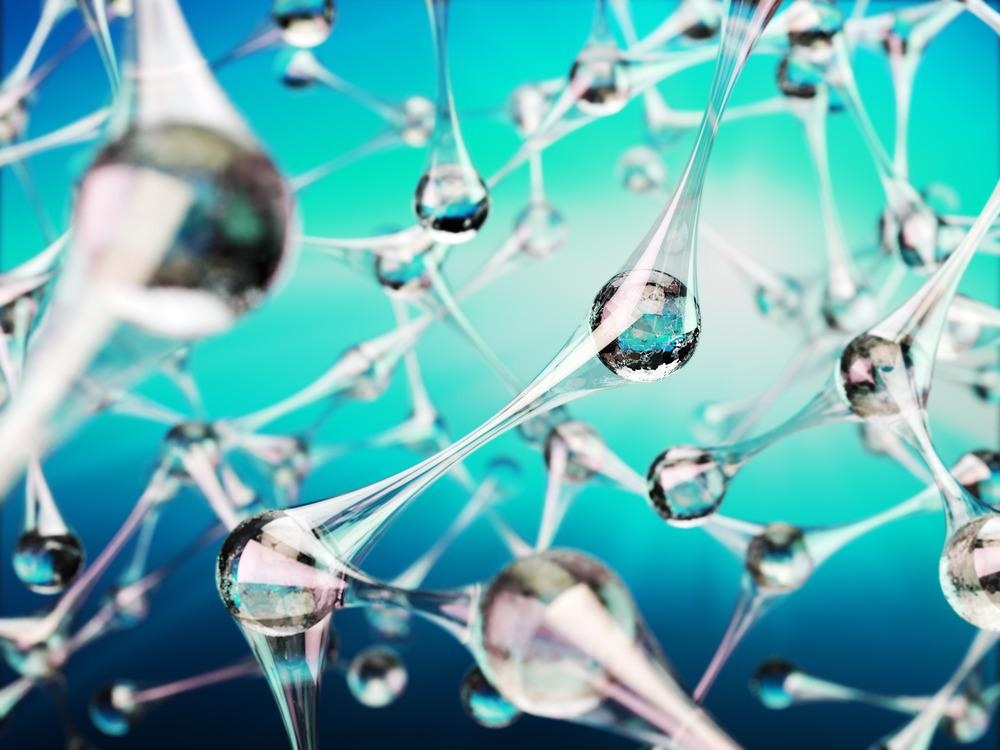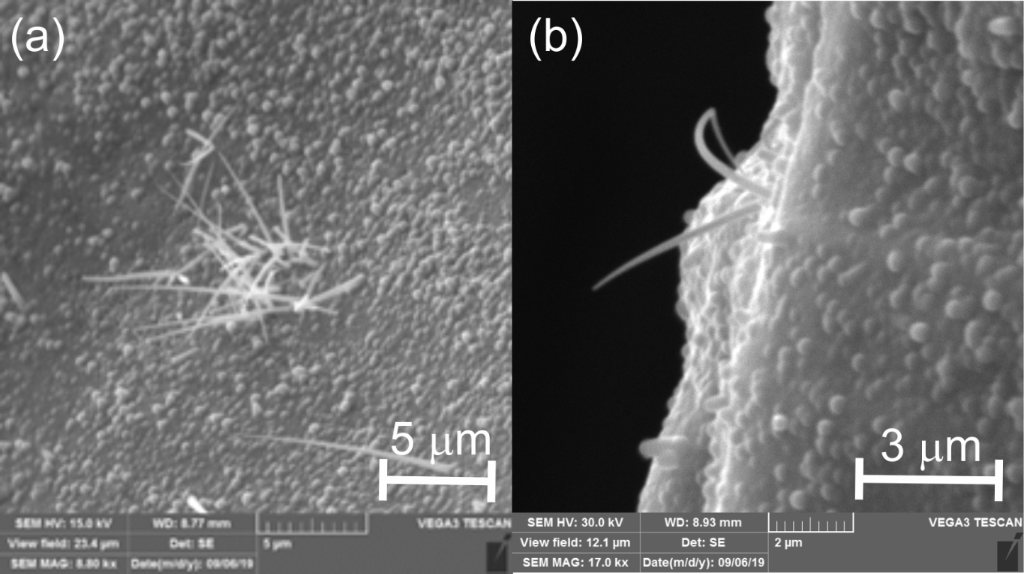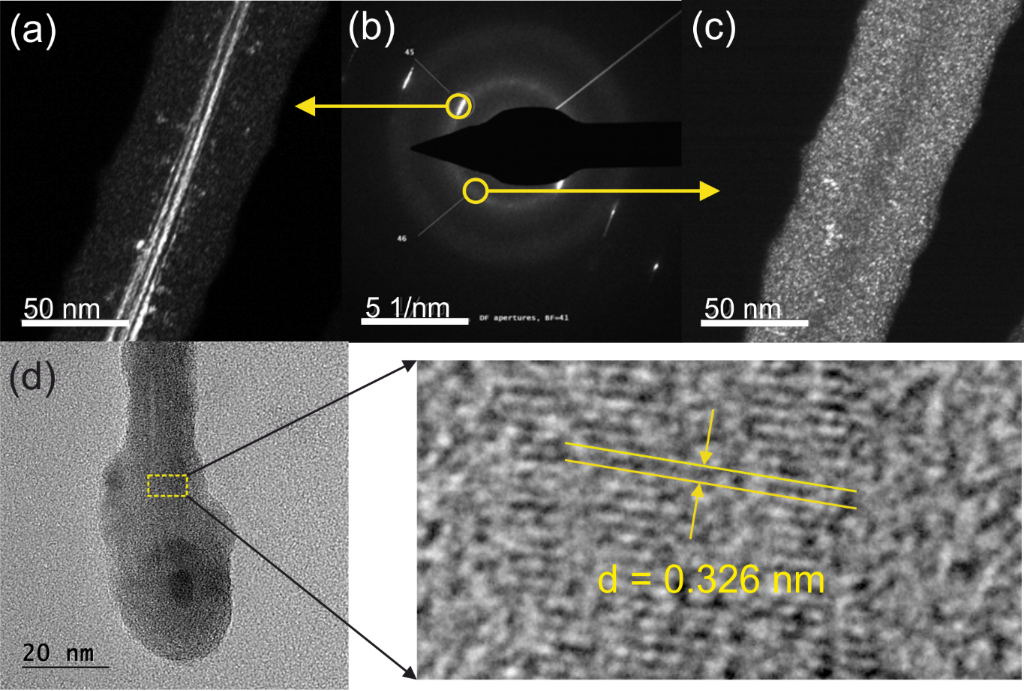Chemical vapor deposition was used to form nanostructured coatings incorporating various types of nanoscale materials such as non-uniform particles, nanoballs, and nanowires in a study published in the Beilstein Journal of Nanotechnology.

Study: Chemical vapor deposition of germanium-rich CrGex nanowires. Image Credit: cybrain/Shutterstock.com
Analytic tests revealed that the layer, unlike particles and nanoballs consisting of crystal germanium, was composed of chromium germanide CrGex. The nanowires have a complicated architecture, consisting of a slender crystal germanium center and a non-crystalline CrGex covering.
Metallic Silicides and Germanides
Metallic silicides and germanides are a well-studied class of compounds with a broad range of characteristics that may be used to suit a number of needs in electrical, optics, and electronic purposes, as well as for catalysis. Furthermore, they are compatible with silicon-based tech, which is beneficial.
The growing demand for sophisticated solutions in the information technology, aeronautical, chemical, and power distribution sectors has spurred the hunt for innovative materials that may be used alongside established products or perhaps even substitute them due to their superior physical and chemical features.
Nonetheless, whereas work on several metallic silicides is currently ongoing, researchers are only getting started with germanides. Though silicon and germanium, both group IV elements, have comparable chemical and physical features, their thermodynamic characteristics suggest that their metallic alloys would behave differently on a fundamental level. As a result, germanides as silicide equivalents are rapidly becoming a focus of present studies.

(a) SEM image of a Cr/Ge deposit with nanowires (b) growing in a tapering manner.
Recap of Pre-existing Research
Previous studies have examined the thermodynamic characteristics of chromium germanide CrGex. Diluted magnetic semiconductor (DMS) alloys have been discovered to exhibit distinct magnetic characteristics.
For the optimum integration with silicon-based applications, silicon or germanium both represent an acceptable option for DMS chromium alloys. But the precipitate formation of transition metals is the major hindrance; however, precipitate formation is greatly decreased in small-dimensional semiconductors.
As a result, CrGe nanowires (NWs) were created to investigate their magnetic irregularities and engagement with charged particles. Electron spin resonance was used in one study to analyze antiferromagnetic groups in CrGe NWs. The spin–orbital engagement of charge carriers and magnetic irregularities have also been investigated recently.
CrGe nano-towers have been created as weak magnetic semiconductors too. One research examined the magnetic characteristics and analyzed the growing process. Another study looked at the creation of CrGe nanoparticles during the epitaxial development of CrGe films, as well as their magnetic characteristics, to better grasp the behavior of ferromagnetic semiconductors.

(a, c) Dark-field HRTEM images, (b) SAED of a nanowire piece, and (d) HRTEM image of a NW top piece with magnified crystalline core and a determined d-spacing of 0.326 nm. The dark-field image corresponds to an indicated diffraction spot in the SAED image. Diffuse circles and individual points indicate the amorphous coating and crystalline germanium, respectively.
Difficulty in Measuring Conductivity of Nanowires
Many efforts were made to test the conductance of singular nanowires by transferring them onto contact lithography platforms. The nanowires, unfortunately, proved to be brittle and got damaged when they were attempted to be removed off the tungsten tip using a concentrated ionic beam. As a result, a technique for directly contacting in-situ a grown singular NW was devised by the team.
Researchers managed to measure the conductance between the point of contact of the tungsten tip and the substrate with the NW using this approach.
Growth Mechanism of CrGex Nanowires
CrGex NWs form without the need for any extrinsic seed, through a self-catalysis process. In general, the formation of a nanowire must first be started in self-catalytic nanowire formation.
Crystallized germanium nanoballs that have been grown on the surface act as starting points for the growth of nanowires. The nanoball's oxidized exterior coating acts as a further resistive component in the NW deposition system.
Main Findings of the Research
The team created coatings featuring CrGex nanowires via CVD. The intricate elemental makeup was calculated, the microstructure was determined, and resistivity assessments of singular nanowires were carried out and described in the paper. These analyses demonstrated the impact of the deposit's architecture on NW formation.
CrGex has some favorable thermoelectric qualities, however, it appears that its magnetic characteristic has greater potential. As a result, further magnetic and electrical research is required. Germanium-rich CrGe materials are considered weak magnetized semiconductors that have been extensively researched for potential magnetic, electrical, optomagnetic, and relevant applications.
The fabrication of CrGe compounds as nanowires offers up possibilities for fine-tuning the magnetic characteristics of germanium rich CrGe nanomaterials. Furthermore, as compared to simple structures, the intricate architecture of the developed NWs allows for thorough engineering of NW characteristics via certain technical procedures such as etching, thermal annealing, and doping to obtain, for example, catalytic NWs with large specific areas or hollow nanosized cables suitable for surgical magnetic transport.
Continue reading: Enhancing Cancer Radiotherapy with Ultrathin Gold Nanowires.
Reference
Dřínek, V., Tiagulskyi, S. et al. (2021). Chemical vapor deposition of germanium-rich CrGex nanowires. Beilstein J. Nanotechnol., 12, 1365–1371. Available at: https://www.beilstein-journals.org/bjnano/articles/12/100
Disclaimer: The views expressed here are those of the author expressed in their private capacity and do not necessarily represent the views of AZoM.com Limited T/A AZoNetwork the owner and operator of this website. This disclaimer forms part of the Terms and conditions of use of this website.